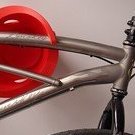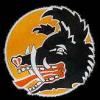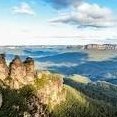Leaderboard
Popular Content
Showing content with the highest reputation on 24/09/20 in all areas
-
Hello guys! First, a little introduction. I joined britmodeller a couple of years ago but I haven't been a very active member. I hope to change that as soon as possible! Second, this is the first time I show some of my work anywhere! I'm kind of a lone wolf as far as models are concerned, so, I'm a little nervous! There's lots of very talented people here! Well, the model is the very nice and beautiful Revell F-84E Thunderjet in 1/48 scale. Construction was very straightforward with minimal use of putty. The only problems I found were bad fit around the nose and tail, but nothing serious. Also, the model gets a little fiddly when installing all the remaining parts such us landing years, fuel tanks, and navigation lights. It was painted with AK Xtreme Metal colors (Aluminium, Dark Aluminium and Polished Aluminium for the nose). Also, a Quickboost seat was used to replace the kit one. Decals were a mix between Cutting Edge, Expert Choice, Aeromasters and the kit. The model represents the personal mount of Colonel Robert L. Scott while he was in Germany in 1952. This is the early scheme with the frameless canopy and no Comand Stripes in the back of the plane. Weathering was kept to minimum as photos of that era shows a very clean aircraft. To sum up, a very fun and relaxing build. Hope you like it! PS: Sorry for the photos. I used my cellphone. Thanks for watching! Tato37 points
-
Finished this a little while ago. Airfix 1:48 javelin. Really nice model to build fits nicely just let down by the decals. Fin flash too large, “port outboard gun” for the port and starboard side, and flap control on the aileron? Minor let downs on otherwise I really nice model.27 points
-
Hello. Another shelf of doom that was brought in to being again for completion. Just finished it yesterday, the last sunny warm day of the season. Heller kit but from an Airfix boxing of it as a Canadair CL-13B Sabre N8686F ( ex RCAF)operated by Boeing. ( The actual real airframe is preserved in the Museum at Seattle ( I think) in its former RCAF finish but with the attachments to the gun panels still in place). As for the build, I bought this cheap with the main canopy missing that was easily sorted as I had a spare complete one that once belonged to the 1/72nd Hasegawa kit from at least the early 1970s! It just needed a little packing around the sides of the windshield base to close the small gaps otherwise a perfect fit. Usual appliance white aerosol applied for the overall main colour. All decals from JBOT Decals. I also added from scrap pieces of plastic card, what appear to be either camera ports or something to the gun cover panels. Obviously something to do with the job it did as a chase plane for Boeing. There should also be a boom on port wing tip that I have yet to add when I find something suitable. Note the 'sugar scoops' near the wing root trailing edges and fuselage underside22 points
-
1/48 Airfix Cutriss Tomahawk speed build project. During lockdown I started several kits recently and finished a grand total of ZERO. So I tried to get this one knocked out quick just to try out a few things and also to feel some form of achievement in completing someing for once. Excuse the canopy detail was sacrificed for time and i ran out of decent masking tape so its a bit naff. Pilot has had damage during a dogffight and has limped back home and is in for a bumpy landing on one wheel. I'd imagine its approx 18-20 hours build time maybe? 3 evenings with drying time basically, corners were cut and decals missed and the carpet monster had its fill.20 points
-
Hi guys This is Tamiya's 1/48 Matilda Mk. III. It was built oob, painted with Life Color acrylics and weathered with oils and pigments. Thanks for looking. Cheers, Greg19 points
-
Harrier GR3, XZ967 D “Donatello” 1473 Flight, Belize 1993. Built for the Helicopter, Autogyro and STOVL group build. Airfix 1/72, Freightdog resin tail fin, Pavla jet nozzles, CMK seat, Master pitot and AOA sensor, Brengun PE boarding ladder, decals from Xtradecal set X72186. My first attempt at airbrushing a disruptive camouflage scheme using blue tack worms. True to form I picked a nice easy subject, wrap around and with a complex area around the jet nozzles! I was attracted to this aircraft as Donatello was my daughter’s favourite Teenage Mutant Ninja Turtle, and here he is on the tail: Thanks for looking. AW15 points
-
Hi all The model that I barely decided to make, I was not attracted by the parts, details and whole model looks somehow like a toy in this black color ..... but I like the exotic shape of the plane ... well ..... Nothing spectacular, I wanted to do it as a pure prototype came out of the paint shop ..... and that's it. Hobby Boss seems better to me, but the price is significantly different. Here, I only shortened the legs of the landing gear, and I mean more than 2 millimeters, and again it looks like a stork. Also added details in the cockpit .... I hope that some of you will like it. Till something more serious, best regards, Djordje14 points
-
Hello all. I have just finished this little beauty of a kit, the Airfix 1/72 Tiger Moth. It is the second of these new toolings that I have finished, and I have enjoyed both! The kit itself is delightfully moulded, but there were some mould blemishes on one of the interplane struts, along with some flash but neither were a problem to sort out. I needed some filler between the cockpit openings but that was pretty much that. The only parts I really had problems with were the main undercarriage parts, and that is only because of my ham-fistedness. I decided to add the wheels right at the end having test fitted them, but when I did, the undercarriage disintegrated! Thankfully, ala Hot Chocolate, I put it together, again. This time though, I added the wheels first - should of (have?) done that first time. The model did get rather fragile towards the end. I brush painted with Colourcoats Foliage Green, varnished with Revell Matt varnish acrylic and rigged with InfiniModel rigging line. All in all, I loved the build. I did not add the cross-bracing between the rigging wires though. I may try that later. I also photographed this with the other one I did, from the original boxing of this new tool kit: Thanks for looking, Ray14 points
-
Set as a build challenge on ARRSE to see if I could bang out something decent for a tenner, this beauty was won on eBay for under a tenner. Being a bit OCD, it had to be done so I did my best to make something of this kit and turned out something that is semi respectable given its scale challenges. Anyway - here it is and in open air! The canopy is done now as per the first snap, and yep - the roundels are a bit big, but what the hell. I had fun doing it and that's what its all about14 points
-
Just a small mid week update. The tank got paint. As did the other bits and bobs. Looking for mash choppers they’re all different with different tanks and colours so I’m running with my choices. Even in the show some have doors and some don’t. Gah!!🤨 I’m going for white rotors. Not pure white but not green. This little beauty will come together rather fast I should think. more soon. JJ.14 points
-
The build log is here and towing my scratch built OIL bowser . . .13 points
-
Here's my entry for this years Battle of Britain GB, bought from a local 'Works' shop a couple of years ago for a bargain £20. Everything quickly built up and were out of the box using kit decals, save for Xtradecal Swastikas. Vallejo ModelAir paint used throughout with 'Klear' Gloss Varnish and 'Galeria' Matt Varnish to finish. Very little weathering was done, I simulated flight by cutting off and filling in the propeller blade openings, save for the port He-111 one which I displayed as stopped due to flying through some bullets off a Hurricane! The stock crew figures were used, with a bit of surgery, but I did use bits off a Zvezda PE-2 and a Matchbox He-115. Davey.12 points
-
Sopwith Pup "Gnome" Wingnut Wings 1/32 This is WnW's Gnome engined version of the Sopwith Pup, and it's the first kit of theirs that I've built and way out of my comfort zone, being an AFV and Sci-Fi modeller generally. The kit went together without any real issues, although handling it become more difficult as the build went on and a few repairs were needed along the way. The single biggest job was the masking for the stripes, although I simplified it as much as possible by breaking the painting down into stages, rather than trying to mask and spray the whole thing in one go. I wasn't looking forward to the rigging due to my zero experience with it, but it went reasonably well once I got the hang of it. Thanks for looking Andy11 points
-
Tamiya Matilda MkIII OOTB Build (hence the naff figures) Caunter camo Scheme advancing through the desert.11 points
-
My latest project is this Fairey IIIF from Kora. Quite nicely moulded but a bit of flash here and there particularly on some of the smaller parts. I also used their resin wheel set as the kit ones had some bad sink marks in them. In general parts fitted pretty well with the only difficulty being the cockpit inserts which required some careful trimming. Photo etch parts are really fine especially the surrounds to the foot steps. The colour scheme details say this one is a IIIM but I'm hoping that's just a typo? Other than being a civil version I'm not sure what the differences are? The rigging is rolled wire and the only other extra addition were a couple of sets of generic seatbelts. Anyway, thanks for looking. 1 2 3 4 8 6 910 points
-
I must thank my private secretary for responding much better than I could have done ... Thanks Mr C! Don't worry Merlin, and welcome. Well, it's time to thinking about the engine. Another multi media story... First step: In situ... Alignment rod between gearbox and radiator... Front engine bracket: Distribution's chain housing now here too... Thanks for looking! Dan. PS: Yesterday, first day in the workshop on the Traction. Of course with two left hand and one surviving neuron...10 points
-
With the Bugatti racer now completed, time to look at the next one. For no particular reason other than it jumped into my hand, I'm going to try my hand at a 1/72 vacuform , a Heston Type 5 Racer. Nice boxart. The plastic Can't go wrong with Arctic Decals Our resident monk @Moa RFI: will hopefully point me in the right direction. I have only ever done one vacuform but it was so long ago in 1/48, I can't remember any of it. I'm sure it'll be fun. Stuart9 points
-
Hello Everyone, The build is a MIG29SMT built into an Indian Air Force MIG29UPG taking off on a Wet Runway with Glowing Afterburners. The kit used is a Trumpeter MIG29SMT in 1/72 size. Most of the work done was on making the Flame look realistic enough. The flame is Clear Resin and is lit by using 2 White LEDs housed in the exhaust cans. The model is painted using the bare basic techniques of preshading and light coats of grey color to make this an IAF grey machine. Paints used were acrylics. This was a first trial run to make the Afterburner Flames, so I hope this becomes a step in producing more of such models. Do Enjoy the Build. . . Cheers . . . . 🙂9 points
-
Hi, Finally got enough courage to post here Build this about a year ago. It is OOB, only bombs/rockets were added. During this model I bought my airbrush, so it is mostly brushpainted, only the aluminium and black/yellow tail were touched up with the airbrush. I know there are some mistakes and the alu color doesn´t look the part but still, its one of my favorites Enjoy, George8 points
-
Crystal Pete. Thanks. That makes an awful lot of sense now. As a definition of 'ground truth' that is well nigh unbeatable James! 'X number of @71chally fingers' now becomes a default unit of measurement on this thread. I bought a set of PNs for a FAW.1 online last night James as I wanted some decent (labelled) photographic refs. of the various instrument panels and there was some interesting reading to be had. Regarding seats it has sections on both the Mk.4D (on early production models and the Mk.4DS on later FAW.1s. The only differrences between the two it lists are that the height raising mechanism for the pilot's seat on the earlier 4D is manual, not motorized, and that connection points for the leg restraining cords and personal equipment connector are a different arrangement. Reckon I'll go with your suggestion for '481 with mixed seats, and '708 both later with backshields. One other interesting note from the manual was just how potentially damaging firing the Microcell rockets was - no wonder they abandoned them pretty quickly as both both engine flame disruption and damage to cabin cold air supply are mentioned! Also confirmed was the point @Pete in Lincs made some time back that the RAT could indeed only be retracted once the aircraft was back on the deck/ground. Armed then with James' measurement from front to rear pressure bulkheads, I set to work earlier on the blocking out openings in the nose areas of both aircraft: For XJ481 this means only the pilot/observer openings on the top, plus observer's window. on XN708 both the radome and inspection panels just aft of it will also be opened up. To cope with using the same set of drawings of the opening on the nose sections of both aircraft, I extracted them from their original component document and set up a new one with only them in it. This should let me focus over the next few weeks on working these areas separetly, knowing that they're still oriented correctly in space in relation to the rest of the aircraft. There wasn't much point taking screenshots of the work in progress as it was pretty unexciting but here is the first draft of the various openings piercing the nose of '708. C;losed: Opened: I expect to have to reposition or resize some of these once I begin work on the cockpit interior so these are a first draft just to establish some outer visual relationships prior to delving inside, as a starting point. To help with alignment and size I'd taken some diabolical liberties using a high pass filter on some of the reference imagery that James had kindly supplied early in the build, as a way of knocking back colour distractions and focusing-in on the boundaries defining various features. A useful process. Looking a bit Gemini space capsule on the inside, though perhaps not inappropriate for the period: Although the pilot's canopy will be vacformed, I've yet to settle on a preferred method for making transparencies for the observer's windows. Might be a nice touch to have the side window opened inwards on '708? This has been a helluva horrible week at work. Who knew the Fleet Air Arm would turn out a 'wellness' treatment for it though? Take care until next time all of you. Tony Addenda. Jesus, my spelling. Apologies. I told you it had been a rough week..8 points
-
Hello to all of you guys and girls. This is my latest finished model.The great Special hobby mirage f1b.I built it as a Kuwaiti air force mirage BK.I used gunze acrylics for the painting and xtradecal decals.You can see more about the build on the following youtube video build link.8 points
-
A few years ago I bought the Trumpeter F-105G Wild Weasel kit. When reading up on it I found that a small number of F-100F two seaters had been modified as an interim measure before the F-105 version entered service and decided to model one of them too. Looking around I found this Trumpeter kit which claimed to include a Weasel version and was on offer cheap so I bought it. On opening the box I found Trumpeter had been somewhat economical with the truth as the saying goes - along with two NMF trainers they included the markings for one of the first 5 converted to Weasels, but had not included any parts for the conversion. I have therefore added a fairing for the AN/APR-25/26 under the nose which is probably hidden by the probe, together with 3 small antennae further back and modified the kit RHAW fairing on the tail so now it looks like it should AFAIK. It went together pretty well apart from some vagueness in the instructions, but by all accounts has accuracy issues, being supposedly too long at the front. Whatever, this is meant to represent F-100F-21-NA serial 581226 of the Weasel detatchment of 6234 TFW, one of the first 5 conversions to Wild Weasel configuration, which carried out the first successful mission against SA-2 Guideline sites. Based as the Royal Thai base at Korat from late November 1965, this is how I imagine it looking on that mission in December of that year with the paint already beginning to burn off the rear fuselage, as was normal with the Super Sabre. As was also normal, I have shown the leading edge slats drooping a little as hydraulic pressure bled off after landing. Cheers Pete8 points
-
On the night of August 12, the five crews selected for the canal raid started their approach from the south of the target. Each crew navigated their way individually towards the location, as was customary - no formation, just each a/c with their navigator using dead-reckoning and planning to arrive at the same time. The sequence : Sqn Ldr Pitcairn-Hill (83 Sqn) F/O Ross (83 Sqn) Flt Lt Mulligan (83 Sqn) P/O Matthews (49 Sqn) Flt Lt Learoyd (49 Sqn) Sqn Ldr James Pitcairn-Hill, the first to attack, threaded his way northwards through a curtain of flak and blinding searchlights. Levelling out at 100 feet above the canal he maintained a rock-steady bombing run and released his bombs before banking away from the danger zone. Although badly damaged by the intense light flak he limped home to England. --- On y va! The engines were done in Tamiya NATO black and drybrushed gunmetal. A test assembly for the landing gear. Very fiddly and thin. It's supposed to attach to four small locating holes in the lower wing. Might have to add some more support structure in the wheel wells. Boxed in the opening for the two landing lights as well. I think I might be mostly done with the interior, just the front end that needs the seat and table added. Plenty of test-fitting along the way, everything still lines up and closes tightly The yoke is somewhat resized (still a bit too large). Yahu IP is a better fit than expected. Decided to give our pilot a backrest consisting of a scrap of card, with plastic putty structured to form a cushion. Will drape some longer belts over that. The back office: The area directly behind the cockpit doesn't show when the fuselage is closed up, so I haven't added the Elsan. This is good enough for the scale8 points
-
Working on the details, which often sends me back to photographic references, I realized I had missed the antenna mast and wires. This type of tall mast located at the aft restroom bulkhead is associated with Western Electric radios. I have only two other photos of planes with the same antenna, a NAT machine and Ford NS1, a Department of Commerce machine for which, no matter how many hours I spent searching, I only found one bad photo. It seems to be a beautiful example, with some small notes of color. I have added the control cables from the front of the plane to the wing, fabricated a crank for the open mail hold, and prepared the above-mentioned antenna. I think the radio worked with "Toilet Energy"®(@Martian patented it)8 points
-
Fairey Fulmar MkI, N1868, 7L, No 808 Squadron Fleet Air Arm, Wick, Scotland, August 1940 The British Air Ministry issued a specification in 1934 calling for a light bomber capable of being used as a dive bomber. In the end, the Hawker Henley was the selected design - although it was only used as a target tug, but that's a whole different story. Fairey's P.4/34 prototype was later found, with some modifications, able meet a later Admiralty specification for a fleet observer and defence fighter. As the rather hide-bound organisation it was at the time, the specifications called for a two-man crew, with a pilot plus observer. It was understood that pilots were not capable of flying the plane, making observations, and finding their home aircraft carrier on their own. I am only partially joking. The Fulmar first flew in April 1940. It was an all-metal design, derived very much from the Fairey Battle light bomber, and was rather heavy for an eight-gun fighter. This wasn't all that surprising, considering the nature of a carrier-based aircraft with folding wings and catapult equipment, carrying two people. The Fulmar proved to be easy to fly, with few vices, rugged and reliable. A single Rolls-Royce Merlin VIII of 1,080hp gave the plane a maximum speed of just under 250mph and a service ceiling of 21,000ft, plus a useful endurance of around four hours. Armament was eight 0.303in Browning machine guns, grouped four to each wing. Lack of a defensive armament for the observer was criticised at the time, and it became a regular thing for observers to carry a Very pistol or sub-machine gun on sorties. I have read an effective defence was to throw a bundle of toilet paper wrapped in elastic bands into the slipstream, apparently guaranteed to throw a pursuing fighter into confusion! No 808 Squadron was formed at RAF Worthy Down, Hampshire, in July 1940. A brief period of patrols over the Irish Sea while based on the Isle of Man was followed by the squadron being assigned to the RAF Coastal Command station at Wick in the north of Scotland. No 808 Squadron came under the effective control of No 13 Group, Fighter Command, making it only the second FAA squadron to qualify for Battle of Britain honours. In September, the squadron was assigned to HMS Ark Royal, part of Force H in the Mediterranean. You can read more about the squadron on the Wikipedia page. The kit was built from an Airfix boxing of a mould that has been around various manufacturers. I think it's currently available from AZ Models. It doesn't exactly fall together, but there isn't much that can go wrong with so few parts. I busied up the cockpit areas a bit, bought in a paint mask from Montex, and made up the camouflage and markings to match what is known of N1868 in the summer of 1940. I suspect the actual finish is more correct once the squadron had been posted to Ark Royal, but without any further firm information it will do. The WIP thread, mixed in with a Grumman Martlet build, can be found here:8 points
-
This is my model of the Lola T70GT entered by Sid Taylor Racing for the 1967 BOAC 500 race at Brands Hatch, and driven by Jack Brabham and Denny Hulme. It started from pole position, but retired with clutch problems. It is the Automodelli Studio (ex Marsh Models) resin and metal kit. It was a reasonably straight forward build, but I added a few extra details. I substituted the seat harness with Racing 43 and Renaissance parts, scratch built the small extinguisher in the cockpit, and added the mesh covers over the carburettors. These were made with frames of rose wire and surplus mesh from a finished Marsh Can-Am Lola. The body was airbrushed with Revell 04 white, the rest being Humbrol enamels. I replaced the kit's green stripes with equivalent decals from Fantasy Printshop, and the race numbers came from an old Tenariv decal sheet. Trevor7 points
-
Another brief update while I take a quick break from work. I'm not sure if I mentioned before, but I opened up a couple of holes on the nose - at some point in the future there will need to be rigging affixed here - still haven't figured out exactly how yet though. There are also two scoops fitted on the nose of the Audax. AMG provide these little blocks - not the greatest, but sufficient. I was going to replace them with brass, but didn't have anything suitable, so plastic it will be. I hollowed out the scoop using the scribers I showed above - very useful little tools. The scoops are a bit high though - according to the photo references, the scoops are mounted just above the air frame and no more. Cutting them down was a simple task. I drilled and pinned them with brass rod as an additional security method. Just dry fitted here though. I'm going to wait until I have painted the nose before I fit them. Now it all gets rather exhausting. I hummed and hawed regarding the exhaust headers I made the other day. I was really wanting to try them in brass to see how they turned out. I know that lots of folks are somewhat intimidated by using brass, but once you try it, it really isn't as difficult as it appears so I'm going to show the entire process, warts and all. So... starting with some brass rod and some brass tube Before I go any further - since there are two exhaust headers, I was going to need to lengths of brass rod with exactly the same bend angle in them. Easy way to accomplish that.... clamp two lengths of rod in the vise at the same time, and bend them both together. Simple. I was using brass rod as the main header because it needed to bend inwards at the front. Brass tube has a tendancy to kink at a bend unless you use a proper bending tool - which I don't have at present, so brass rod was the easy option - to maintain a constant diameter around the bend. Next, take the brass tube and a rat tail file, and file the ends of the tube at an angle. making sure that you get a curve across the entire surface. I cleaned up the outer diameter of the tube but left the ragged edges inside the tube - those will give the solder something else to grip onto. Once you have the initial curves filed into the end of the tube, it's a simple process of adjusting the angle of the file to get the tube to match up to the original bend in the rod. It doesn't have to be exact - just close enough as the solder will fill up any gaps. I started off using my soldering iron, but the brass rod was sucking the heat out of the tip before I could get enough heat into the tube, so I resorted to my little gas torch. I also wanted to do all the joints at once as there was a significant danger that each solder joint would weaken the previous solder joint as they were all so close together. It's not pretty but it got the job done As I said- not pretty, but the solder got around all the joints which was the main thing. The great thing about solder is that it cleans up really easily - wire wool, file, or the edge of a blade will all get rid of any excess solder quickly. The wire wool is especially helpful in getting rid of any rough edges About two minutes worth of scrubbing with wire wool soon cleaned up the assembly. I spotted here that I got the angle a bit off, but I'm not too concerned as you are not going to see a whole lot of the headers once fitted A little bit of action with a dremmel clone cutting disc and a file soon evened things up The entire process for one header assembly took less than 30 minutes from start to finish. Well worth the effort think. But what do they actually look like in place? Well, here you go and a merciless close up. As you can see, the little difference in the angles is barely noticeable once the exhaust header is in place. It will be even less so once they are painted up Next operation will be to trim the headers to length. The Audax exhausts ran about 3/4's the length of the fuselage and also have a couple of bends along the length, and I have a plan chundering away in my head which I hope will work to good effect.7 points
-
Bienvenue tout le monde! Welcome to the Heller Classic Group Build, the 2020 season Classic Group Build dedicated to a specific manufacturers output. The rules are simple: 1. Your genial hosts are @Wez, @Rabbit Leader, @Heather Kay, @JeroenS and @JOCKNEY any questions about eligibility of a build should be addressed to them. 2. Standard GB rules apply, you can participate with a previously started model but it has to be less than 25% complete at the commencement of participation. Any doubts, ask the hosts. 3. All threads that wish to be considered for the poll need to have a work in progress (WIP), thread posted within the GB thread AND have a ready for inspection (RFI), post posted within the GB Gallery by cessation of the GB. 4. The GB runs from 3rd October 2020 to 24 Jan 2021. All gallery posts need to be posted by 2359 GMT on the 24th January 2021. 5. Specific to this GB: i. All kits must be original Heller moulds that were originally released by Heller prior to 1 Jan 1986, if you have any doubts, Scalemates is a good place to start but the final arbitration comes from the tables contained within "La Maquette À La Française" by J C Carbonel which @Wez holds a copy of. ii. Subsequent re-releases providing they were originally released before 1 Jan 1986 are eligible. iii. Releases by other manufacturers of original Heller moulds are eligible. iv. Other manufacturers moulds released by Heller are not eligible. v. It is recognised that some of these kits may have been hoarded for many years and things like transparencies and decals may have suffered the ravages of time, therefore all after market accessories are allowed in this GB. It's about getting that old kit built! 6. Finally and most importantly HAVE FUN and enjoy these classic kits!7 points
-
It is certainly the most fiddly model I have built so far! Thanks Chris. Go ahead and jump in, there's no substitute for practice! Thanks Tony, the job goes on.... Progress has been very slow of late, mostly because I really don't enjoy this part of the build, but also because I have been short of available time. So here is a quick update. The tail boom rigging is done and the touching up has also been completed. That left me with this... The next step is to rig the tail control surfaces, and since I had already attached the lines to the nacelle, I simply had to pull them out from their hiding place and attach them. If only! After a lot of swearing and adjusting I managed to get them separated and in the correct order to attach them without having them crossing each other. They were then CAd to the pulleys on the lower wings. The ends were taped to the cutting mat to stop them getting tangled again. Problem there is that masking tape doesn't hold this stuff very well! I also managed to pull out one of the port wing flying wires. I have no idea how as I wasn't working in that area, but I have still to figure out how to reattach it. I may have to remove it and replace it with wire but that is still open to options. Finally, after much swearing, I managed to get the upper elevator control horns and wires attached. I'm still not sure about the left side and may remove it and do it again. We'll see how I feel later! I still can't for the life of me figure out why PE makers make the control horns as separate parts for upper and lower instead of one piece so I could just cut a slot in the elevator/rudder/aileron and slide it into place. It would be so much stronger and so much easier to fit and align! I may well make my own along those lines in future since the first part to come adrift is always a control horn. Anyway, that's where I am now. Rudder and lower elevator still to do providing I don't break any more wires off! Thanks for looking in! Ian7 points
-
Hi, Over the years I have built quite a few Ju-87 Stuka, including both the Airfix first and second moulding versions. For this GB I have built their more recent third 1/72 moulding in its original incarnation as a B-1. It is a nice kit and went together very easily. The only odd thing about it is the markings. Up until July 1940 it belonged to III/St. G 51, but after the fall of France the Luftwaffe went in for quite a bit of reorganisation, and III/St. G 51 became II/St. G 1, carrying over their markings. So this machine of 6./St. G 1 carries a letter T which would suggest the 9th Staffel normally. Airfix say it is from 9./St. G 51 in August 1940 which I think is wrong in terms of date - the Xtradecals sheet has exactly the same machine but from 6./St. G 1 which seems more likely. Anyway, it was a fun build and I hope you like it. Pete7 points
-
On with the little blighter. Only one pic big it’s a lovely one to share. The masking came off and a top coat went on. Next stop decals, clear parts. (Part)🤣 and a pilot needs a paintin’ Like a juicy apple ain’t she. 🥰😍 more soon. 🤩 Johnny7 points
-
Hello fellows, Let me show my WIP - The Citroën Fourgon Type H 1/24 from Heller. I was hooked with this model, after seeing the awesome work made by MBdesignart in Britmodeller, and his choice as a Guiness Van. So, I decided to make the same subjet...I grab the model in a store in Barcelona (24 Euros), and ordered the decals to Motobitz. In few days the decals arrived at home... Let's start with some pics. Your comments will be appreciate!6 points
-
6 points
-
#/20/2020 My dad´s next finshed model. Eduard kit, Exito Decals, plastic rods and lead wire for the brake lines, EZ Line for the antenna wire, MRP RLM76 and Gunze RLM 74/75. Build thread here https://www.britmodeller.com/forums/index.php?/topic/235077410-escape-plan148-messerschmitt-bf109g-6mtt-regensburg-romanian-airforce/ The model displays the aircraft of Captain Constantin Cantacuzino. After Romania turned against Germany, on August 27th 1944 Cantacuzino was then given a special mission: to transport Lieutenant-Colonel James Gunn III, the highest ranking American prisoner-of-war in Romania, to the airbase at Foggia and return to Romania with 56 B-17s converted for transport duty to airlift 1,274 U.S. PoWs. He returned flying a P-51 Mustang because his Bf 109 could not be refueled. p.s.: The antenna wire is supposed to look that way. When the mast was mounted on the Erla canopy, the wire went through the mast and was connected with the canopy locking mechanism. The antenna wire was only tensioned when the pilot locked the canopy. DSC_0001 by grimreaper110, auf Flickr DSC_0002 by grimreaper110, auf Flickr DSC_0003 by grimreaper110, auf Flickr DSC_0004 by grimreaper110, auf Flickr DSC_0005 by grimreaper110, auf Flickr DSC_0006 by grimreaper110, auf Flickr DSC_0007 by grimreaper110, auf Flickr DSC_0008 by grimreaper110, auf Flickr DSC_0009 by grimreaper110, auf Flickr DSC_0010 by grimreaper110, auf Flickr DSC_0011 by grimreaper110, auf Flickr DSC_0012 by grimreaper110, auf Flickr DSC_0013 by grimreaper110, auf Flickr DSC_0014 by grimreaper110, auf Flickr DSC_0015 by grimreaper110, auf Flickr DSC_0016 by grimreaper110, auf Flickr DSC_0017 by grimreaper110, auf Flickr DSC_0018 by grimreaper110, auf Flickr DSC_0019 by grimreaper110, auf Flickr DSC_0020 by grimreaper110, auf Flickr DSC_0021 by grimreaper110, auf Flickr DSC_0022 by grimreaper110, auf Flickr6 points
-
6 points
-
Winch worx! I have been mildly entertained by these brackets First was the large version at the back, carved from moderately oversized Evergreen channel OCD won and it got relegated whilst I tried the good old model aircraft craft of pins and longerons from 0.020" rod This was better but fell down when trying to keep flexible rodding still ready to stick on other little bits, never a happy choice So I tried a refined version of the type one frame Twenty thou Evergreen strip, (I wonder if I rely too much on that?) cut to two and a half mm wide Then drilled and carved And carved some more Now can you see this? Tucked away under the starboard engine efflux in a fetching grey, so last season I am sure you will all agree, is the hydraulic services duct which sits at the forward end of the winch bracket. This marks the spot where the hydraulic pipes will vanish into the fuselage once the mounting bracket is fitted And I have added the camera frame pivot point on the port side, a nasty piece of wire works so it might yet have to go Best seen by looking at the shadow of the flash on the bench, the grey plastic has hidden under the actual wire frame Ah well, real life beckons...6 points
-
Hi Guys, because of holiday and workload, small update. I have started to work on interior. First I had covered with leather but the final result had not satisfied me due to pretty complicated curves of particular elements. So I had removed it and than painted to reach the leather-like layout. I used structured paint from ZP for leather effect and brown to make it darker. I think it is much better. I have just mounted engine and exhaust pipes, flocked spare wheel compartment and cooler with pipes. tbc, regards6 points
-
Thanks! Luckily basically all grocery stores here have stuff like that, atleast in the summer. - - - - - - - - Plastic cannons were removed and holes drilled for the brass cannons. Instructions with the Master products are really good, they tell you the drill sizes etc. Cannons installed. I will leave the resin bits off for now, don't want to knock them off during the painting process. The underside cannon was not included as a brass barrel, but the resin muzzle flash did come with the Master set. That one part looks like a faired over gun port - but I think it's somekind of antenna instead. MiG-19/J-6 was armed with three cannons and radar equipped variants with just two guns on the wing fairings. This particular variant, MiG-19S/J-6 had 3x30mm cannons, which packed quite a punch. Canopy masking to be done and we are ready for primer. Canopy masked... ... and primer is on!6 points
-
I have news for you: Your "cousin" Kang was exposed as a Opheucian agent some months ago (with the help of Juliandra, Suzerain of the planet Herculon) and is now doing hard labor on the prison moon Negato. And your shipments of toffee apples have been seized due to non-payment of interplanetary customs duties. Unfortunately there is nothing else we can do due to your diplomatic immunity status, but you have been warned!6 points
-
On the Scammell, I installed the winch assembly. I then attached the string they give you for the towing cable. I found it much too short if you're going to fasten it to a load on the trailer. I looked around for some suitable replacement wire and ended up having to order it from the US.6 points
-
I assembled the tractor's bogies. I then went back to the rest of the chassis while they dried and started installing the drivetrain. I'm building this completely out of order which is a bad habit of mine. Sometimes it bits me in the rear but I can't help it. With the rear tires on. At this point I was really impressed by how the Scammell's suspension worked.6 points
-
The forerunner of 21st century commercial radio broadcasting. Stunning build by the way. AW6 points
-
6 points
-
One spitfire with all the generic decals applied ... waiting for me to make the Sqdrn Code and aircraft number decision time - laser print decals or make templates with cricut6 points
-
Joining with this T28 Trojan. This kit cost me £4 at IPMS Avon show in 2017. Holding until my Tornados are completed. Researching a colourful Trojan to build as I've built this one before.5 points
-
Hi all, Following the information received on a forum concerning the camouflage of the P-40 N with the serial number corresponding to mine (Presence of green spots on the wings and horizontal control surfaces), I reviewed my camouflage. I also found that the upper horizontal control surfaces were Olive Drab with green spots and below, neutral gray, except the elevator control surfaces which remained white, whereas on my initial camouflage they were completely white. I did it all again and here is the result. The initial post The old camo. Make way for new photos. This will be the final camouflage. This time I don't change anymore. Modelismo5 points
-
Given my profession, retired Officer of Customs and Excise, the toffe apples have now been liberated what you didn't know is that my kid brother, Little Martian is Governer of Negato and is evem more corrupt than Kang. All he wanted was half a toffee apple. Just for being difficult I think it's, "bend over Space Ranger, it's rubber glove time! " Just to make sure we make a thorough job of it, I wil get @general melchett to get Captain Darling to do the job apparantly he likes that sort of thing and has made it one of his hobbies. Martian 👽5 points
-
I crave your indulgence gentlemen and ladies in passing. Can you tell me if this will do please. I mean will this --- be satisfactorily depicted by... Or have I allowed scale creep again? Here is the beginnings of this potential nightmare, a channel mounted on Catalina Sprue (I know H but...) and the arms/legs of the winch bracket added to test the sizes Various little brackets and wibbles to be added before the two main component parts get their contrasting paint jobs. Glossy white plays matt, very matt black. I hope to paint them off the hubschrauber rather than add to the awkwardidity of the forthcoming paint job. In the other section of the werks the Apache now has engines and the main rotor gearbox. On we go.5 points
-
Here is the very early version with manually pumped undercarriage operation. The prominent lever with a knob on the right hand side of the cockpit is what Eduard provide for all their Mk I versions. Here is another view of a slightly later Mk I still with hand pumped undercarriage operation and reflector gunsight. Again you can see the dominate lever with black knob on that right hand side. I show this as the control column lock is in place locking the control surfaces. Here is an image of what we are talking about. Now with undercarriage selector coming off a motor driven pump replacing the hand pump. It became the Spitfire standard for all variants introduced on the Mk I. The debate is when. It also had the control column lock in place. You can also see the remote contactor for IFF mounted high on the side wall with the dial face. Here's my Eduard mods. Scratchbuilt U/C Selector. Spare globes and the Indicator Light Morse Key relocated into that top section under the windscreen with piping for the pilot oxygen supply and the remote contactor put in place. Painted: Ray5 points
This leaderboard is set to London/GMT+01:00




(510x640)-Copy(95x120).thumb.jpg.33073138e01aa81779639a845926753e.jpg)

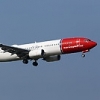
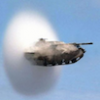
Wedge-TailedEaglePortraitRaptorDomains.thumb.jpg.41a306d3445a68f0f2df773e01776ea6.jpg)

.thumb.jpg.ba34a9f6ddce411193946dbdcc7b5fe8.jpg)
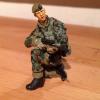
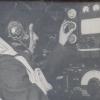


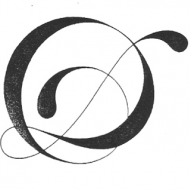



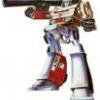


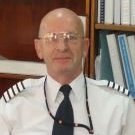

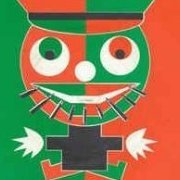
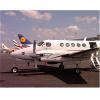
_opt.thumb.jpg.be9c1e22e34c329b51268dfacc8614e0.jpg)

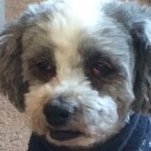
.thumb.jpg.d63052df9f30de247fb49bf44f442289.jpg)



